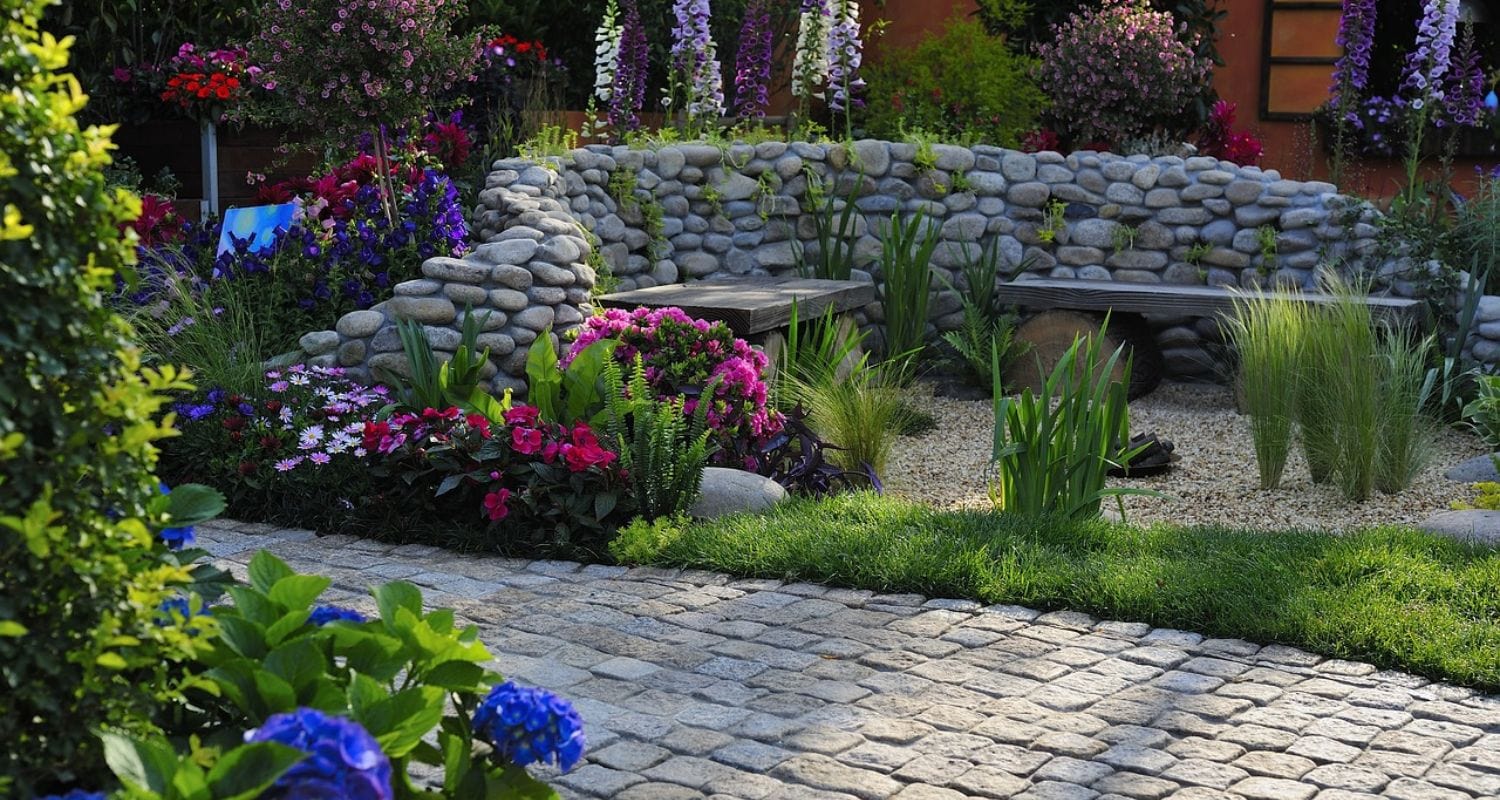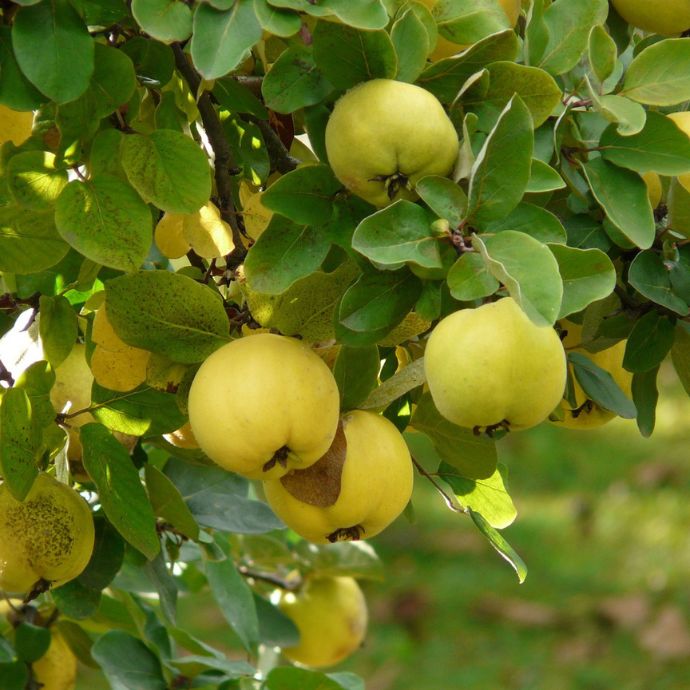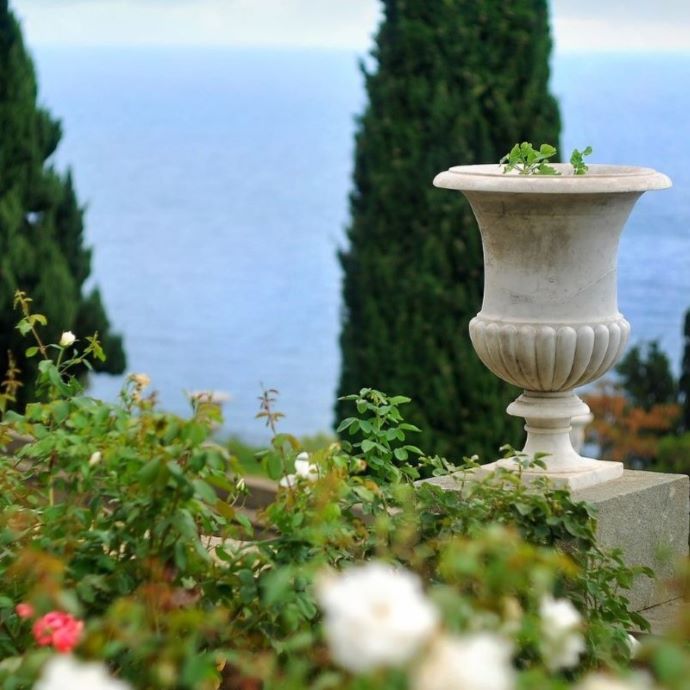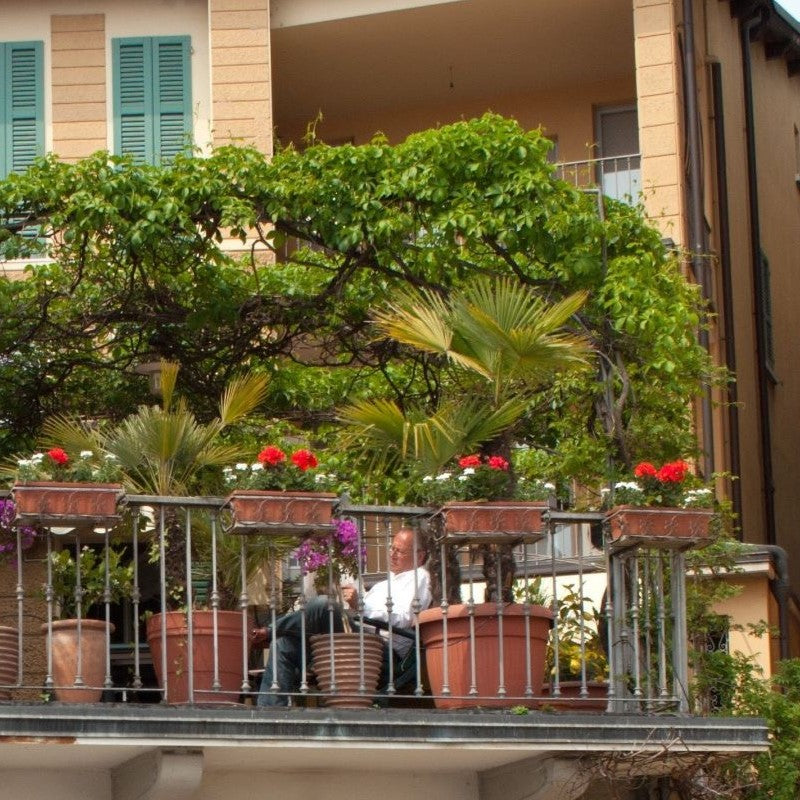Advice & Inspiration
Small Garden Ideas: Design & Planting

We can’t all be blessed with acres of landscaped gardens, and in fact most of us are operating with a pretty limited plot when it comes to the outdoor space available to us. That means we have to be smart about how we use said space, and it’s always worth thinking about how small garden ideas can be implemented to get the maximum impact from a minimum of square footage. With that in mind, we’ve put together this guide to small garden design to help you create your very own little patch of paradise.
Jump to:
- Creating the impression of space
- Adding verticality
- Discerning plant selection
- Not letting space go to waste
- Perennials
- Climbers
- Trees (and shrubs)
- Fruit and vegetables
- Budget small garden ideas
General principles for small garden design
Before anything else, it’s worth establishing some of the core tenets and principles that underpin effective small garden design. Below, we’ve listed four of the key ideas you’ll want to consider when designing your small garden.
Creating the impression of more space
If you haven’t got a large garden, the next best thing you can do is create the illusion that you have a large garden. One of the ways you can do this is by implementing a winding path (or paths). When you think about it, this makes sense. If you draw a straight line from one side of your garden to the other, and traverse it as the crow flies, then your garden will feel every bit the limited space it objectively is. If, however, you snake a path through your garden, it takes longer to walk through and therefore gives the sense that your garden is bigger.
Another way to make your garden feel more sizeable is to compartmentalise your garden into separate “rooms” or zones. Now, a caveat here is that if you have a really tiny garden, then this method probably doesn’t work, because any benefits the demarcating has is negated by the fact that those separate areas have to be so small in order to fit them in. If you do have that little bit more space, however, then these separate areas (e.g. seating area, raised veg bed, pond, etc.) can lend your garden the impression that there’s more space than there actually is.
Add verticality
If you can’t grow out, grow up! We don’t tend to pull from urban design when contemplating our gardens, but thinking about skyscrapers – those giant metal and glass behemoths ubiquitous with dense cities – can actually lead to a better small garden. Hear us out. Adding verticality to your garden provides more for the eye, creating a garden that works in three dimensions, rather than just two. There are many ways you can introduce this sense of height, including plant ladders, climber-laden obelisks and hanging baskets. The plants you choose can also add height (agapanthuses, delphiniums, hollyhocks, etc.) but we’ll come back to that later.

Discerning plant selection
If you haven’t got a lot of space to play with, then you need to be more selective about the plants you choose. Whereas with a larger garden you might have room to experiment with different plants and dedicate entire areas and flower beds to specific plants – a bed specifically (and entirely) intended for cut flowers, for instance – with small gardens you don’t have that luxury.
With that in mind, you have to give more forethought to your planting selection. Now, whatever you choose, there’s likely going to be some kind of tradeoff. For example, you could elect to go for something thematic, like a Mediterranean-style garden; this creates a cohesive sense of style and place but risks producing periods throughout the year in which your garden feels pretty bare (winter being the obvious one).
Conversely, you can choose an array of different plants for year-round interest, even if you lose a little of that sense of theming. The sneaky way around this dilemma is by opting for a garden theme which utilises evergreen and winter-flowering plants, like a Japanese-style garden. Check out our guide to Japanese garden design for more information on this.

Don’t let space go to waste
While this might seem obvious, many gardeners don’t make the most of their outdoor space, and this inefficiency leads to a small garden feeling even smaller than it needs to. For example, if you plan on using your garden for both relaxation and storage, then aim to combine the two. Multi-purpose furniture, like benches with in-built storage capacity, effectively kill two birds with one stone and leave more room for planting. Remember, when it comes to small garden horticulture, you want to work smarter and not necessarily harder!
Best plants for small gardens
So, now you know how best to design your garden, it’s time to think about the plants you’re going to use. As a general rule of thumb, you want to be choosing plants that offer interest in multiple ways. Beautiful flowering plants that are also fragrant, for example, or an evergreen that retains appeal all year round, rather than merely shining in one or two seasons.
Perennials
When choosing herbaceous perennials for small garden beds and borders, aspects worth considering include colour palette, height, wildlife appeal and more. Blue and purple flowers (like certain delphiniums and lupins) give the appearance of being further away, making a garden feel larger, while tall-stemmed plants like agapanthuses can add that element of verticality to a border that we discussed earlier on. Salvias and verbenas are highly-attractive to pollinators like bees and butterflies, which again adds another dimension to your small garden.

Climbers
Climbers offer a fantastic way to mix up the structure of your small garden, and have the added benefit in that they don’t take up much floor space, so to speak. Plus, they can be used to bolster seating areas like pergolas and arbours, providing visual (and often fragrant) heft. If you’ve got a patio, you might also want to consider a climber which grows well in a pot. Our favourite climbers for small gardens include miniature climbing roses, certain clematises and ceanothuses.

Trees (and shrubs)
When it comes to trees for small spaces, we’d recommend this is where you take the most time to choose, because they’re obviously more expensive and more difficult to replace once planted, should you actually decide you want something else. With that said, you’ve got a few options available to you. Patio fruit trees and lollipop trees both elevate paved spaces, while compact trees like acers and certain cherry blossom trees (such as the ‘Flagpole’ cherry) make for spectacular feature trees.
Another space-saving option is to go for an espalier or fan fruit tree, which involves training your fruit tree to grow against a wall, fence or trellis. Espaliers most commonly consist of a central upright trunk, with tiers of paired branches grown perpendicular, though there are also other espalier shapes. Fan-trained trees, as the name suggests, are trained against a wall so that its branches fan out in various directions. Not only does training a fruit tree against a vertical surface suit smaller gardens, it also actively helps grow fruit trees that prefer warmer climates (like apricots and peaches) as the tree will absorb heat from the wall.
Make sure you check not just the height but also the spread of the tree you’re getting. It’s all very well finding a beautiful ornamental tree ready to plonk in your garden after seeing it only grows a few metres tall, but if you miss the fact that the same tree spreads just as much (if not more) then you’re potentially going to be left with a problem down the line. We’ve already mentioned the upright ‘Flagpole’ cherry blossom tree, and other narrow trees worth considering include Acer palmatum ‘Shidava Gold’ and Laurus nobilis (the laurel tree) which can be trimmed and clipped to stay narrow.

Fruit and vegetables
Growing certain fruit and vegetables is a great way to maximise efficiency within your garden, because not only do many of these plants produce wonderful flowers – strawberries, for example – they yield delicious edible produce, too. Creating your very own kitchen garden doesn’t need to be a massive affair, either.
Herb gardens can be grown in troughs and on windowsills, while hanging planters can enable you, again, to grow upwards rather than outwards. Finally, if you are going to use your small garden to grow produce, then choose fruits and vegetables that don’t take up too much space. So that’s yes to chillies, radishes and currants, and no to asparagus, melons and rhubarb.

Small garden ideas on a budget
If you’re gardening on a budget but still want to transform your outdoor space into a small garden worth shouting about, then here are some things you can do.
Upcycling materials
Recycling and reusing materials isn’t just good for the environment, it’s good for the wallet, too! If you have a pallet or two going spare, for instance, then you can easily convert them into planters. All you need is a saw, a hammer and nails, some landscaping fabric to line your planter and then a potting medium to fill it with.

Choose self-seeding plants
If you don’t want to fork out too much on plants, then you can be shrewd and buy plants that you know will self-propagate. These self-seeding plants, including geums, aquilegias and eryngiums, will pop up near to where they were initially planted, and can easily be transplanted to other parts of the garden should you fancy.

Be smart with your material choices
Inevitably, you’re not going to be able to create a small garden entirely using repurposed or upcycled materials and you’ll need to fork out a little bit of cash in some areas, but that doesn’t mean you can’t be savvy about what you choose. If you have spaces to fill, perhaps that winding pathway we mentioned earlier, then go for gravel. Cheap, attractive and coming in a range of styles, gravel also adds that satisfying crunching sound underfoot that ticks off another of the sensory boxes.

Final thoughts
Quality over quantity, remember that! A small garden by no means has to be a bad or boring garden, and hopefully having read this, you’ll know exactly where to start with your very own smaller outdoor space. Make sure you check out our other garden design guides, including prairie, coastal, cottage and formal gardens.










































